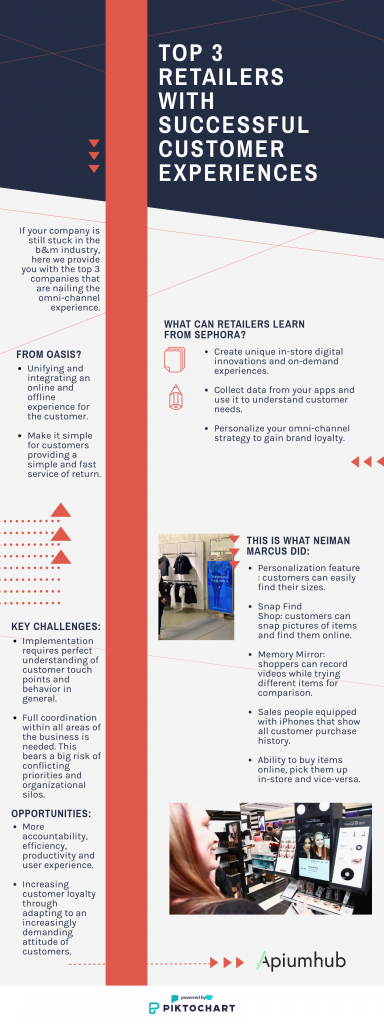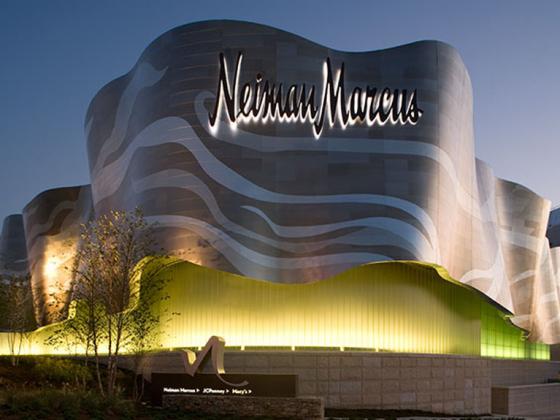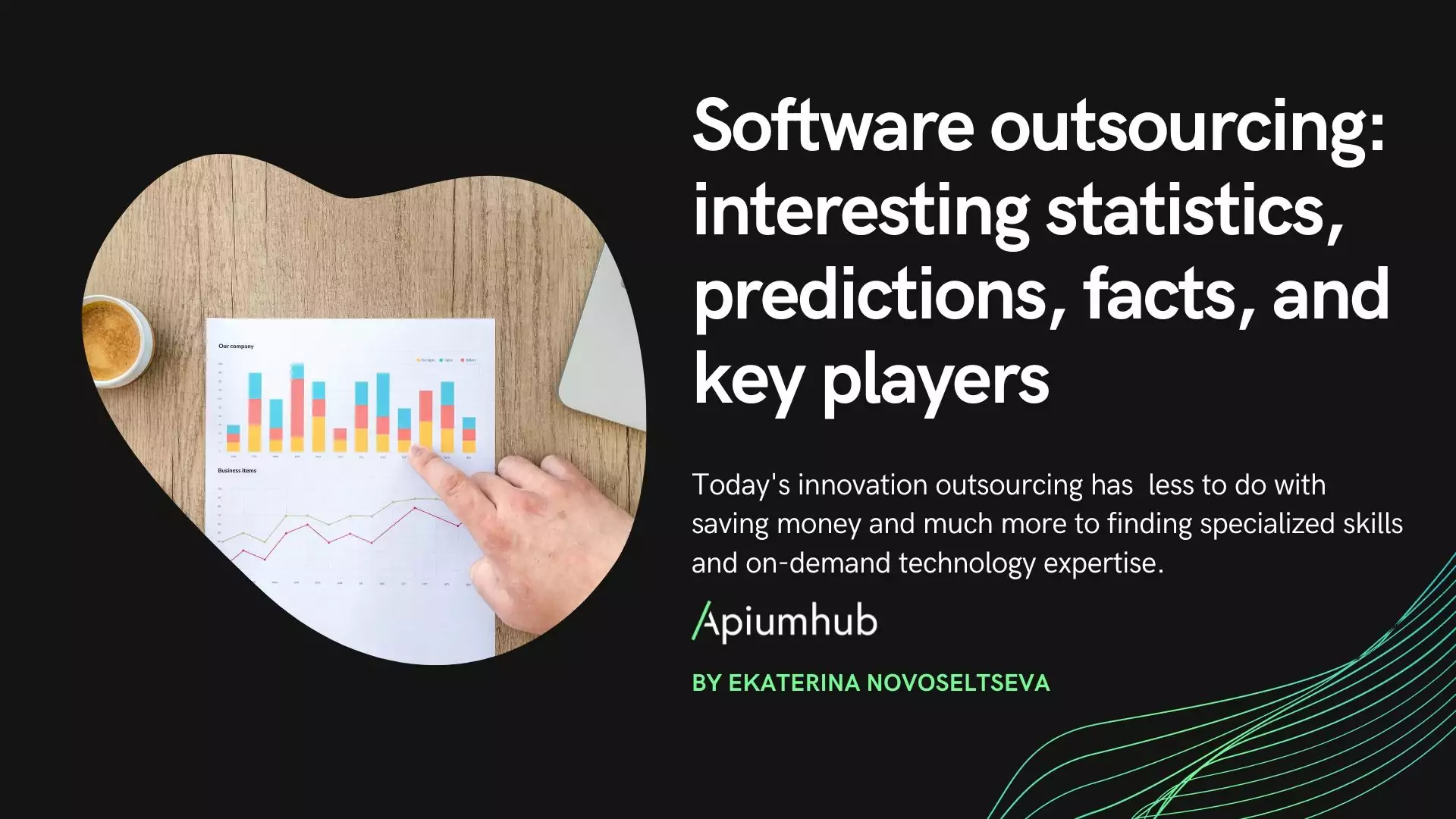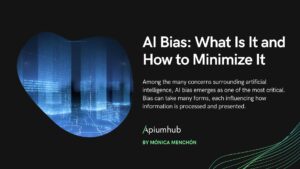In an era where the traditional brick & mortar is almost dead, retailers are creating more and more omni-channel practices to make the customer experience more engaging.
In Spain for example, 50% of companies had an omni-channel strategy driven by sales organizations, while 90% have click-and-collect in place at physical stores.
If your company is still stuck in the b&m industry, here we provide you with the top 3 companies that are nailing the omni-channel experience.
Oasis
Photo: Retail Gazette
Why is Oasis successful with its omni-channel strategy?
It is all about unifying and integrating an online and offline experience for the customer.
Oasis is a well-known British fashion retailer that operates along with 96 locations all over the world. They own 80 brick-and-mortar locations in the UK, a highly developed e-commerce site, and a mobile app.
Physical store experience:
At the store, the customer is delighted with the welcoming of the sales associates offering them a technological integrated advising service. They use iPad in order to advise the customer for what they are looking for – giving consideration the customer’s searches and preferences. It is also possible to pay through the iPad as well so the client doesn’t have to wait in the queue up to checkout and leaves the store with a fast and great store experience in its mind.
Membership club:
For the most loyal customers, they offer to be part of the membership club paying for a card that allows the customer to have unlimited free delivery for £9.99 a year.
Returns:
The return service provided by Oasis is very simple and advantageous. They have the option of returning the items in a traditional way at the store and doing it via Collect+. How does it work? It consists in a network with over 5,5000 drop off points in local stores that allow customers to return their purchases easily.
Oasis has integrated an effective online experience which has lead to an improvement in the customer experience.
Neiman Marcus
Photo: Retail Leader
Neiman Marcus is a great example of an institution doing omni-channel right. In fact, they launched a new personalization feature in 2016 that is related to customer sizes. The way this feature works is that their website will show shoppers nearby stores that have the sizes they searched for online.
They also have another tool called “Snap Find Shop”. Using this feature customers can snap photos of Neiman Marcus items that they like and automatically find them for purchase on the application or mobile site. If the software can’t find the exact item, it can recommend similar products to the customer sold by Neiman Marcus.
Another initiative of theirs is the “Memory Mirror”, which is located in their physical stores. It lets shoppers record videos of themselves trying on different items of clothing and accessories, which could be saved on the Neiman Marcus app for comparison and purchase later on.
All Neiman Marcus sales people also carry around iPhones that can provide them with on-the-spot information about a customer’s purchase history. They can also through these phones find any item online that isn’t available in-store.
Since inventory is centralized, customers can basically buy items online and still pick them up in-store if they want to and vice-versa. This makes the Neiman Marcus shopping experience fully integrated, fulfilling all customers needs and wants.
Sephora
Photo: Deva Darshan
If we can just define Sephora in one sentence it would be “The beauty giant” not only because they have around 2,500 stores in 32 countries worldwide but also for its awarded implementation of digital innovation.
The company creates an omni-channel experience by installing beauty playgrounds for its shoppers that allows them to combine the experience of online & in-store visits. The customer experience is leverage by receiving more personalized shopping and interactive digital options, in which the store provides iPad stations showing makeup tutorials and mobile activations to access to their “Beauty bag” for making it easier to the customer to narrow their options and find their shopping choices in a faster way, all of this by just using the app. This app also allows the shopper to try on products virtually and find their perfect match, if you like the product you just need a few clicks to order it and it will be send directly to you.
For Sephora, the app helps the company recognize when a consumer enters their store and provide the consumer with relevant information from a store map to deals and/or offers. Another functionally of this digital experience is the The Beauty Workshop in which the consumers can attend beauty classes by Sephora’s Makeup artist, interacting with digital screens that enable the consumers to imagine how the items may look on themselves. The Beauty Workshop also include Wi-Fi and USB ports so consumers can choose and share favorite looks with friends directly from their seats.
Sephora wouldn’t be a true omni-channel leader is they didn’t continue the customer experience after leaving the store. Their strategy continues while the cosmetic lovers have available new products, tutorials, news and trends of the industry all in their app, keeping the customers engaged and having Sephora in the top of their minds.
For this reason the number one beauty retailer is our last but not least retailer in our Top 3, but for you to have a visual representation of what is Sephora’s success in the omni-channel industry, we recommend you to watch this video:
Pros and Cons of implementing an Omni-Channel Strategy for your Business
Omni-channel distribution, as great as it is, is complicated. This strategy is comprehensive and takes all channels into account with the aim of delivering a seamless customer experience regardless of device or channel. You have to understand each customer touchpoint before you even begin building your strategy, understanding your customers’ behavior is key to getting this strategy off the ground.
Furthermore, a key challenge for retailers exists in conflicting priorities and organizational silos. Omni-channel marketing requires that a large number of people in a lot of different places all be on the same page, from the marketing department, right through to the customer service teams and shop floor assistants. Everyone needs to be working towards the same objective to make your omni-channel marketing strategy a success.
As a result, only relatively few companies globally have managed to transform their business in order to provide an omni-channel experience to their customers. For them, however, it has been without any doubt a fruitful investment. Adapting to an omni-channel strategy brings in more accountability, efficiency, productivity. According to Facebook IQ, 54% of omni-channel shoppers say they are more likely to shop with a retailer that makes it easy to buy on several devices. With consumers adopting an increasingly demanding attitude to pretty much every aspect of any retail brand, businesses can’t afford anymore not to be present across a multitude of channels whilst offering unrivaled customer service in order to retain loyal customers.

Sources:
www.retaildive.com
http://info.localytics.com
www.digitalcommerce360.com
www.hitsearchlimited.com
http://info.mkmdistribution.com














